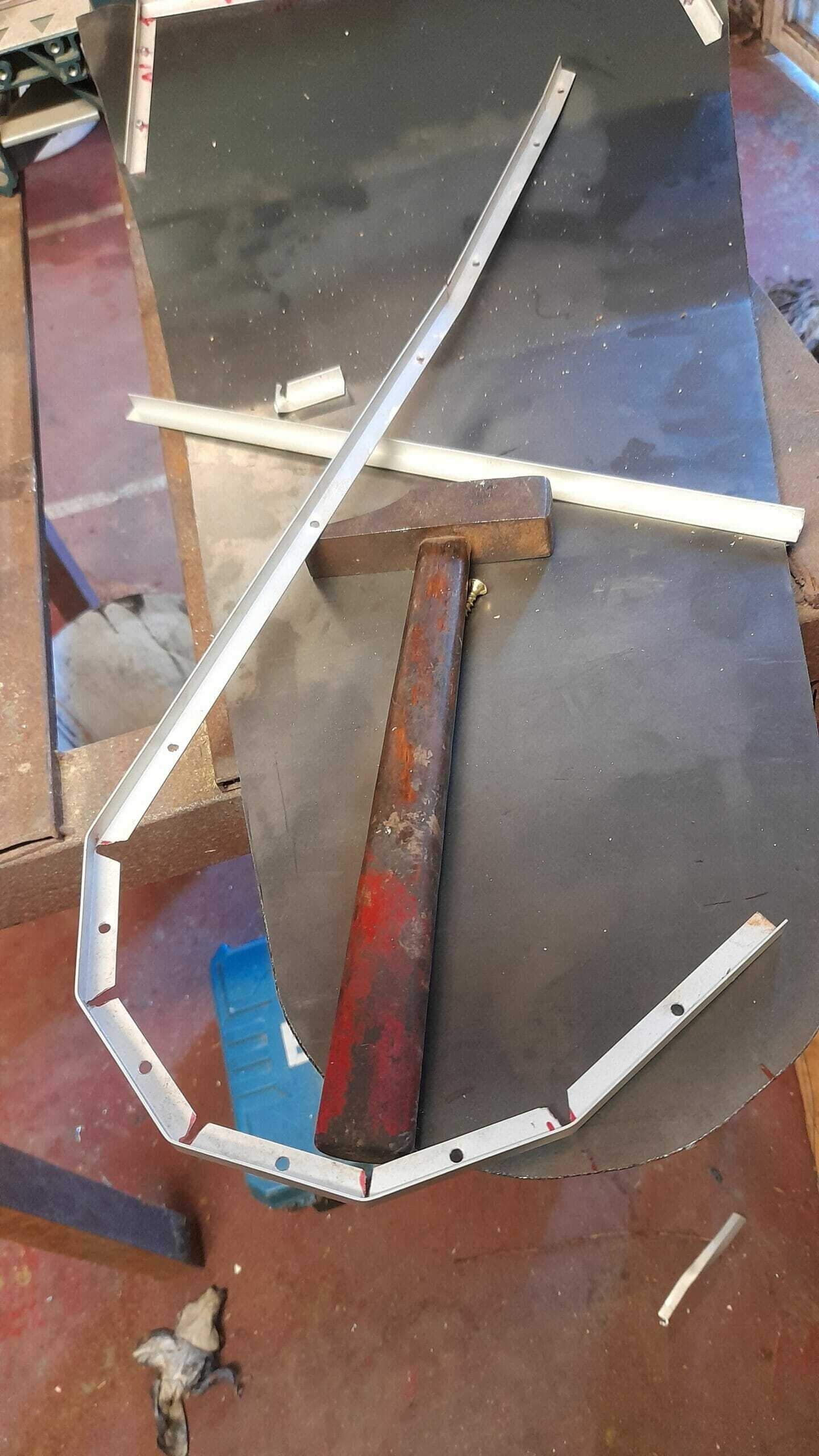Phase 2 - Angles and inner frame

On these plates we are going to build something similar to a tray that collects the drops of oil that may fall. From the plug, gasket or elsewhere. In this tray, we can also, by the way, collect the oil that falls from the breather of the Renault Dauphine cylinder head. If you own one, you will remember the tube coming out of the right rear of the rocker cover, a tube that leads directly to the outside.
We will reinforce the tray with aluminum angles of 1 cm x 1 cm. This will form a frame that will serve to house a foam or any material that soaks liquid.
In addition to the aforementioned function of housing the foam, the fact that it is an angled profile will make the sheet rigid. This is advisable because the sheets have a certain length and although we have used 1.5 mm sheet metal, it still warps a little. Thicker plate could have been used, but this would have negatively impacted both weight and ductility, making it heavier and more difficult to work with, without any considerable improvement.
In the longer plates, we have additionally fixed T-shaped “ribs”, made with two angles joined “side by side” that will contribute to give the necessary rigidity to the whole, without impacting on the weight. You will see it in the central plate that we have also prepared.
All joints and fastenings between the aluminum profiles and the sheet are made with rivets. It is a quick, clean and very easy solution to carry out. We have used 3mm diameter rivets. Although if you want something bigger, you can also use them without problems.
Photo gallery phase 2
This is the image gallery of the preparation phase of the inner structure of the plate. You can click on each of the photos to see the description. As always, if you have any questions or doubts, you can contact us and we will be happy to answer and help you.
Drillings on iron plate
Although you probably already know this, one of the best ways to drill sheet metal with precision is to mark with a punch and a hammer the exact point where you want to drill. In this way the drill bit will be fixed on the exact spot (which you may have previously marked with an indelible marker) avoiding the unpleasant effect of the drill bit slipping. Another alternative is to use – if available – a pillar drill. In addition, as there are many holes to be drilled, I recommend that you use drill oil, which is also known as “taladrina” and which you will find in all imaginable formats and sizes Mira
here
if you want a quick overview of options.
